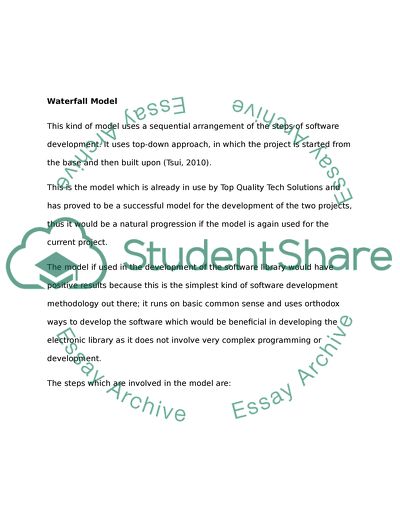Cite this document
(“Software Development Methodology Coursework Example | Topics and Well Written Essays - 1250 words”, n.d.)
Software Development Methodology Coursework Example | Topics and Well Written Essays - 1250 words. Retrieved from https://studentshare.org/information-technology/1575146-comparing-software-development-methodologies
Software Development Methodology Coursework Example | Topics and Well Written Essays - 1250 words. Retrieved from https://studentshare.org/information-technology/1575146-comparing-software-development-methodologies
(Software Development Methodology Coursework Example | Topics and Well Written Essays - 1250 Words)
Software Development Methodology Coursework Example | Topics and Well Written Essays - 1250 Words. https://studentshare.org/information-technology/1575146-comparing-software-development-methodologies.
Software Development Methodology Coursework Example | Topics and Well Written Essays - 1250 Words. https://studentshare.org/information-technology/1575146-comparing-software-development-methodologies.
“Software Development Methodology Coursework Example | Topics and Well Written Essays - 1250 Words”, n.d. https://studentshare.org/information-technology/1575146-comparing-software-development-methodologies.


